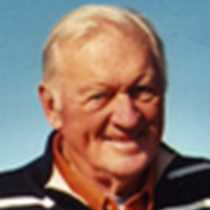Clearwater Nez Perce and Hell’s Canyon, Washington, Idaho & Oregon
Today, guests and staff split into two teams. One group took a motor coach into Lewis & Clark country in the panhandle of Idaho. The other boarded jet boats that ran upriver on the Snake River into Hell’s Canyon. With balmy weather and first-rate guides, historians and naturalists, the two adventures revealed wildlife, dramatic basaltic walls, waterways that have served as nature’s highways for thousands of years, and backdrops for stories about Native cultures, geological wonders, and the opening of the West.
After boarding a motor coach with an expert local guide and historian, Lewis & Clark devotees followed the foot and horse steps and Clearwater River routes of the Corps of Discovery along their 1805 (westward) and 1806 (eastward) paths. Lewis & Clark in Nez Perce country describes the mixing of two worlds: the traditional Indian culture of Northern Idaho, the Bitterroot Mountains and western Plains (the Nez Perce or NeMeePoo people), and the bold, disciplined Euro-Americans who were following orders of President Thomas Jefferson to establish an American presence in the Pacific Northwest.
Our guide, Linwood Laughy, of Clearwater Connections, led the Lewis & Clark party to sites that matched the actual locations of the Corps as they struggled both directions on the trail. Story-telling was the modus operandi to describe exploits, mistakes, successes, privations and experiments by Meriwether Lewis and William Clark as they virtually bushwhacked their way through unknown topography. The journals of the Corps and rough maps of Clark were used as milestones along this route. In fact, because of the extraordinary length of time – almost three months total both ways – the Corps spent in today’s Idaho Panhandle there are more Lewis & Clark sites in this rolling hill, or Palouse, country than anywhere else on their 3,000 mile trail.
Guests aboard jet boats left the dock of National Geographic Sea Bird and quickly moved through sculptured canyon walls up the northward-flowing Snake River (named for the Shoshone or “Snake” Indians). Wild water, wildlife and tall tales about the famous Hell’s Canyon kept passengers busy. Among the sightings: bighorn sheep, a herd of mule deer, a Blue Heron, Canadian geese, a large steelhead in a fisher’s net and ancient petroglyphs were treats along the way.
Just past the mouth of the legendary Salmon River, or River of No Return, the jet boats moved past an old mining ghost town and the site of the lost steamboat Imnaha which went down in the late 1800s. Prehistoric rock formations in Hell’s Canyon tell the story of a slowly drifting land mass that was once part of South Pacific waters.
Both teams of National Geographic Sea Bird explorers met at the Nez Perce National Historic Park at 4:30 PM for a Ranger talk, short optional hikes, and a chance to see rare Indian costumes, artifacts and aboriginal art.
After dinner, a short film was shown about the Missoula or Bretz Floods in anticipation of tomorrow’s Palouse River adventure.




